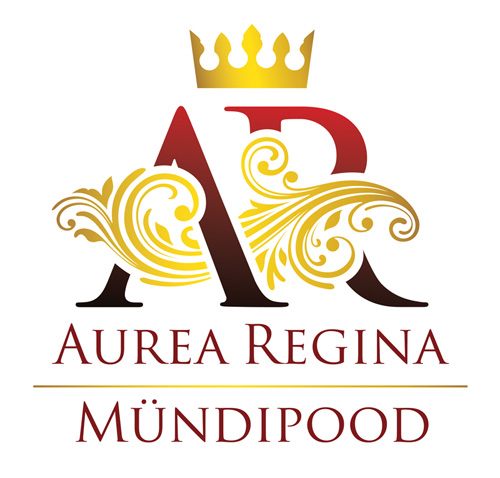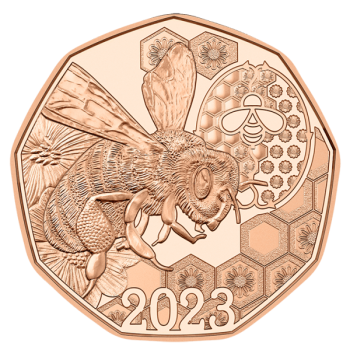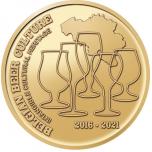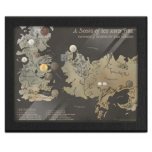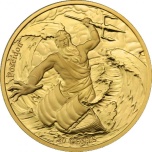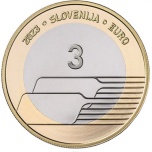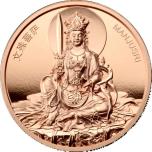Easter Coin 2023. The Waggle Dance - 5 € 2023 copper coin, 8,5 g
Price:
19,00 €
Quality: Special Uncirculated
Face Value: 5 Euro
Diameter: 28,5 mm
Copper: 99,9%
Total Weight: 8,5 g
Mintage: 50 000
Comes without packaging
Why talk when you can dance instead? That’s how bees communicate. Their ‘waggle dance’ is a wonderful phenomenon and one that not only bees themselves benefit from. Other living creatures, including humans, do so too, because bees are a vital part of our ecosystem: their welfare is our welfare.
In the early 20th century, the unusual behaviour of honeybees piqued the curiosity of behavioural scientist Karl von Frisch (1886–1982), who grew up in Vienna. He was intrigued by the way the insects sometimes move in circles and perform a figure of-eight ‘waggle dance’. In time, von Frisch discovered that when doing so, bees are in fact ‘speaking’ a dance language to the other members of their hive to show them where they can find pollen and nectar. Although originally disputed by other scientists, von Frisch’s theory eventually earned him the Nobel Prize in 1973.
The ‘round dance’, in which bees walks in a circle, turn around, then walk the same circle in the opposite direction, tells watching bees that there are flowers with pollen in the immediate vicinity of the hive. When the food source is further away, the waggle dance tells the watching bees how far it is and in which direction they can find it. A representation of the waggle dance is shown in the background on the coin’s reverse, behind a bee in flight and above a decorative honeycomb deign. The obverse of the nine-sided coin shows the coats of arms of all the provinces of Austria. Not just for nature lovers, whether in copper or silver, Waggle Dance makes for a great spring or Easter gift.
In the early 20th century, the unusual behavior of honey bees piqued the curiosity of behavioral scientist Karl von Frisch (1886–1982), who grew up in Vienna. He was intrigued by the way the insects sometimes move in circles and perform a figure-of-eight ‘waggle dance’. In time, von Frisch discovered that when doing so, bees are in fact ‘speaking’ a dance language to the other members of their hive to show them where they can find pollen and nectar. Although originally disputed by other scientists, von Frisch’s theory eventually earned him the Nobel Prize in 1973 for achievements in comparative behavioural physiology and pioneering work in communication between insects. It is not just bees themselves that benefit from this wonderful phenomenon, as other living creatures, including humans, do so too. Honey bees, wild bees and bumble bees are a vital part of the ecosystem: their welfare is our welfare.
Face Value: 5 Euro
Diameter: 28,5 mm
Copper: 99,9%
Total Weight: 8,5 g
Mintage: 50 000
Comes without packaging
Why talk when you can dance instead? That’s how bees communicate. Their ‘waggle dance’ is a wonderful phenomenon and one that not only bees themselves benefit from. Other living creatures, including humans, do so too, because bees are a vital part of our ecosystem: their welfare is our welfare.
In the early 20th century, the unusual behaviour of honeybees piqued the curiosity of behavioural scientist Karl von Frisch (1886–1982), who grew up in Vienna. He was intrigued by the way the insects sometimes move in circles and perform a figure of-eight ‘waggle dance’. In time, von Frisch discovered that when doing so, bees are in fact ‘speaking’ a dance language to the other members of their hive to show them where they can find pollen and nectar. Although originally disputed by other scientists, von Frisch’s theory eventually earned him the Nobel Prize in 1973.
The ‘round dance’, in which bees walks in a circle, turn around, then walk the same circle in the opposite direction, tells watching bees that there are flowers with pollen in the immediate vicinity of the hive. When the food source is further away, the waggle dance tells the watching bees how far it is and in which direction they can find it. A representation of the waggle dance is shown in the background on the coin’s reverse, behind a bee in flight and above a decorative honeycomb deign. The obverse of the nine-sided coin shows the coats of arms of all the provinces of Austria. Not just for nature lovers, whether in copper or silver, Waggle Dance makes for a great spring or Easter gift.
In the early 20th century, the unusual behavior of honey bees piqued the curiosity of behavioral scientist Karl von Frisch (1886–1982), who grew up in Vienna. He was intrigued by the way the insects sometimes move in circles and perform a figure-of-eight ‘waggle dance’. In time, von Frisch discovered that when doing so, bees are in fact ‘speaking’ a dance language to the other members of their hive to show them where they can find pollen and nectar. Although originally disputed by other scientists, von Frisch’s theory eventually earned him the Nobel Prize in 1973 for achievements in comparative behavioural physiology and pioneering work in communication between insects. It is not just bees themselves that benefit from this wonderful phenomenon, as other living creatures, including humans, do so too. Honey bees, wild bees and bumble bees are a vital part of the ecosystem: their welfare is our welfare.
Similar products
The 2.5 euro coin is minted in BU-quality and is issued in two language versions. On the coincard, a close-up of a beer will quench your thirst. On the coin you will see the Belgian beer culture in a nutshell; each beer has its own matching type of glass!
Details
• Official issue to commemorate 5 years of Belgian beer culture
• Thirst quenching packaging in two language versions
• Limited mintage of max. 20,000 coins
• Legal tender in Belgium, not for circulation
Specifications
• Metal: Brass
• Weight: 10.50 g
• Diameter: 25.65 mm
• Quality: Brilliant Uncirculated (BU) / FDC
• Design: Iris Bruijns (obverse), Luc Luycx (reverse)
• Max. mintage: 20,000 coins worldwide (distributed in 2 language versions in a coincard and 7,500 coins are included in the annual FDC set 2021)
Details
• Official issue to commemorate 5 years of Belgian beer culture
• Thirst quenching packaging in two language versions
• Limited mintage of max. 20,000 coins
• Legal tender in Belgium, not for circulation
Specifications
• Metal: Brass
• Weight: 10.50 g
• Diameter: 25.65 mm
• Quality: Brilliant Uncirculated (BU) / FDC
• Design: Iris Bruijns (obverse), Luc Luycx (reverse)
• Max. mintage: 20,000 coins worldwide (distributed in 2 language versions in a coincard and 7,500 coins are included in the annual FDC set 2021)
19,00 €
3-medal collection officially licensed by A SONG OF ICE AND FIRE™!
Celebrate the 25th anniversary of the very first "A Song of Ice and Fire" book (published 1996 by famous George R. R. Martin) or the 10th anniversary of the first tv series in 2021!
Including 13 medals struck from different (precious) metals & a 13-paged booklet telling the story of each medal telling the story of the great houses of Westeros & Essos. Scroll down for a complete collection overview!
A must-have for every book lover or tv series fan - a perfect collectors' item to reach new target groups!
The Premium Display Packaging hosts your complete collection and can also be used as a picture frame which makes it a great gift product for Christmas!
OFFICIALLY LICENSED A SONG OF ICE AND FIRE MERCHANDISE
© GEORGE R. R. MARTIN. ALL RIGHTS RESERVED.
CURRENCIES OF WESTEROS & ESSOS COLLECTION SCROLL DOWN for a complete collection overview
Weight: 2.9 g - 21 g
Metal: various - Silver, iron, brass and more
Diameter: 21 mm - 38 mm
Quality: circulated
Special Feature Officially licensed product, picture frame packaging
Celebrate the 25th anniversary of the very first "A Song of Ice and Fire" book (published 1996 by famous George R. R. Martin) or the 10th anniversary of the first tv series in 2021!
Including 13 medals struck from different (precious) metals & a 13-paged booklet telling the story of each medal telling the story of the great houses of Westeros & Essos. Scroll down for a complete collection overview!
A must-have for every book lover or tv series fan - a perfect collectors' item to reach new target groups!
The Premium Display Packaging hosts your complete collection and can also be used as a picture frame which makes it a great gift product for Christmas!
OFFICIALLY LICENSED A SONG OF ICE AND FIRE MERCHANDISE
© GEORGE R. R. MARTIN. ALL RIGHTS RESERVED.
CURRENCIES OF WESTEROS & ESSOS COLLECTION SCROLL DOWN for a complete collection overview
Weight: 2.9 g - 21 g
Metal: various - Silver, iron, brass and more
Diameter: 21 mm - 38 mm
Quality: circulated
Special Feature Officially licensed product, picture frame packaging
299,00 €
Face value: 0.2 $
Issuing country: Samoa
Weight: 25 g
Diameter: 40 mm
Poseidon, as the god of water and of the sea, is the lord of sea creatures, so the sign of the pair of fish is more than appropriate. Pisces, however, also dives deeper in Poseidon’s realm. For starters, it is associated with the feet, and Poseidon is also a god of the earth, of tremors and geological processes, closely tied to water eroding rocks. The sea is also considered to be where the pillars of the universe are located in most western Eurasian religions, and in Greek thought Poseidon’s realm extends even to the Underworld, where the four rivers run, a connection particularly important in the more chthonic versions of Hellenic religion. If Cancer is the Moon and it’s spiritual essence while Scorpio is blood and the impulses, with Aquarius also representing sky waters, Pisces is simply the pure nature of water as an element, symbolizing the immensity of the seas and the many freshwater bodies. It’s the sign of mutability and change, resonating with water’s classical attribute as well as the very real quick and natural changes into ice, liquid, gas or cloud and also the currents. It also symbolizes Spring waters, be them from rains or melting snow and ice, feeding the fields and civilization, acting as water changing the surrounding environment.
Issuing country: Samoa
Weight: 25 g
Diameter: 40 mm
Poseidon, as the god of water and of the sea, is the lord of sea creatures, so the sign of the pair of fish is more than appropriate. Pisces, however, also dives deeper in Poseidon’s realm. For starters, it is associated with the feet, and Poseidon is also a god of the earth, of tremors and geological processes, closely tied to water eroding rocks. The sea is also considered to be where the pillars of the universe are located in most western Eurasian religions, and in Greek thought Poseidon’s realm extends even to the Underworld, where the four rivers run, a connection particularly important in the more chthonic versions of Hellenic religion. If Cancer is the Moon and it’s spiritual essence while Scorpio is blood and the impulses, with Aquarius also representing sky waters, Pisces is simply the pure nature of water as an element, symbolizing the immensity of the seas and the many freshwater bodies. It’s the sign of mutability and change, resonating with water’s classical attribute as well as the very real quick and natural changes into ice, liquid, gas or cloud and also the currents. It also symbolizes Spring waters, be them from rains or melting snow and ice, feeding the fields and civilization, acting as water changing the surrounding environment.
35,00 €
Face vakue: 3 euro
Diameter; 32 mm
Weight: 15,0 g
Alloy: Bimetal;CuNi, nordic gold
Quality: UNC
Commemorative coin dedicated to the Day of Slovenian Sport.
• The Day of Slovenian Sports is a national holiday celebrating the international successes of Slovenian athletes.
Diameter; 32 mm
Weight: 15,0 g
Alloy: Bimetal;CuNi, nordic gold
Quality: UNC
Commemorative coin dedicated to the Day of Slovenian Sport.
• The Day of Slovenian Sports is a national holiday celebrating the international successes of Slovenian athletes.
9,00 €
Face value: Samoa 0,25$
Weight: 40gr
Diameter: 40 mm
Mintage: 6666
Proof copper coin with partial gold plating
In East Asian Buddhism, the Twelve Heavenly Generals or Twelve Divine Generals are the protective deities.
Weight: 40gr
Diameter: 40 mm
Mintage: 6666
Proof copper coin with partial gold plating
In East Asian Buddhism, the Twelve Heavenly Generals or Twelve Divine Generals are the protective deities.
39,00 €
